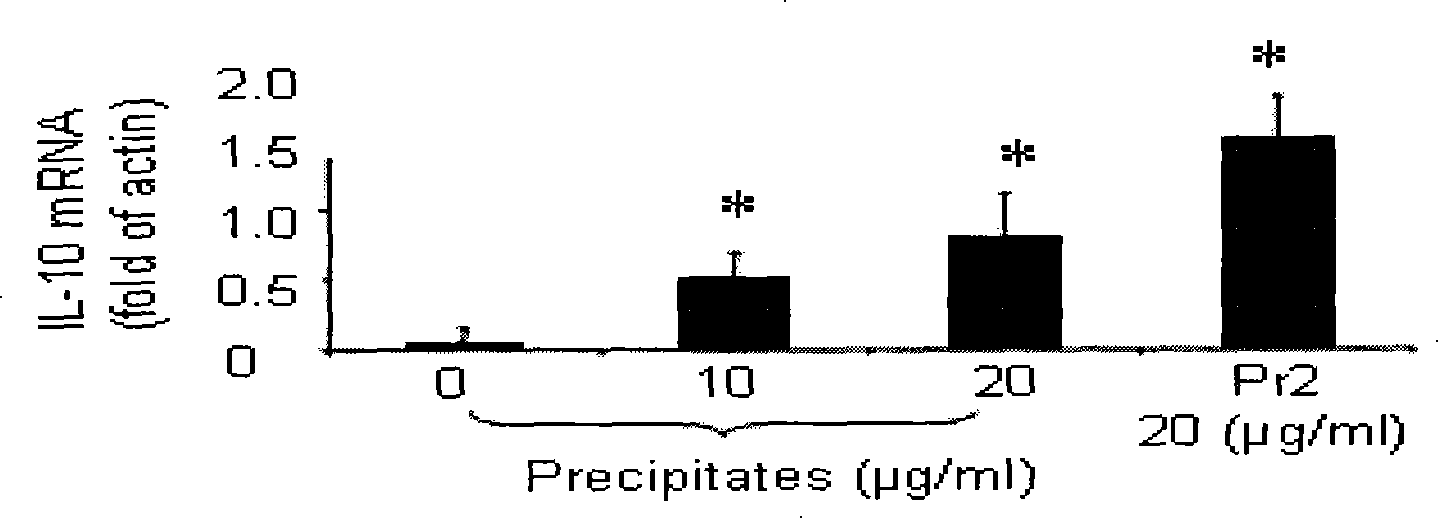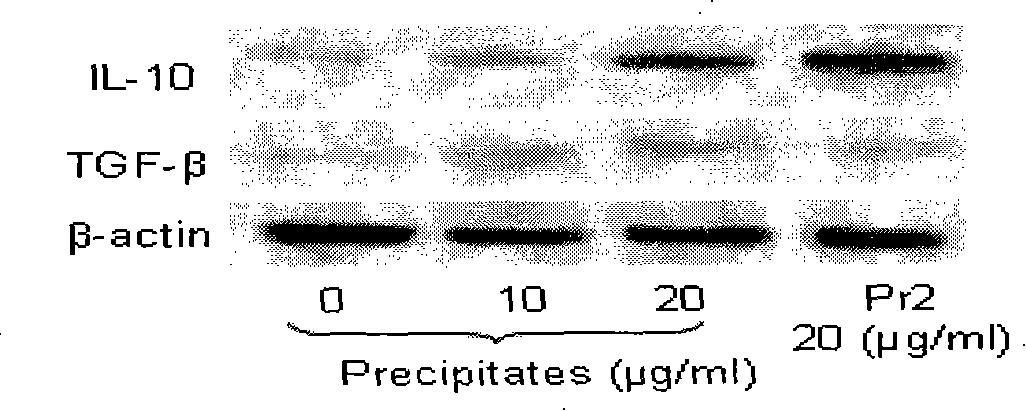Rhamnose bacterium lacticum Pr2 peptide and coding gene thereof, separation method and application
A technology of Lactobacillus rhamnosus and genes, applied in the field of immunomedicine, can solve the problems of poorly understood cellular and molecular mechanisms, and unknown properties of probiotic immune-modulating components.
- Summary
- Abstract
- Description
- Claims
- Application Information
AI Technical Summary
Problems solved by technology
Method used
Image
Examples
Embodiment 1
[0048] Embodiment 1 Purification of Lactobacillus rhamnosus Pr2 peptide
[0049] 1. Accumulated evidence shows that the application of probiotics has a regulatory effect on immune function, for example, repairing unbalanced Th1 / Th2 function, improving the production of Tregs, etc. Because live bacteria are necessary to obtain therapeutic effects, the inventors of the present invention speculated that a component in the culture supernatant of probiotics may play a role in regulating the function of DCs and further regulating the immune response. The inventors of the present invention used bone marrow-derived dendritic cells (BMDCs) as an evaluation system, and the culture supernatant precipitate of Lactobacillus rhamnosus was used to stimulate the growth of BMDCs. Since DCs-derived IL-10 and transforming growth factor (TGF-β) play a key role in the production of Tregs, the inventors of the present invention have studied the culture process of BMDCs stimulated by the culture sup...
Embodiment 2
[0058] Example 2 Functional detection of Lactobacillus rhamnosus Pr2 peptide
[0059] 1. The role of Pr2 in increasing the expression of IL-10 in BMDCs.
[0060] After stimulation by Pr2, the expression levels of IL-10 in the culture medium and BMDCs cell extracts were significantly increased compared with the expression levels after stimulation by the supernatant precipitate (Fig. 1A, B), and it was dose-dependent ( Figure 1E , F). The dynamic observation of IL-10 expression in BMDCs, continuous observation studies showed that Pr2 increased the expression of IL-10 reached a peak at 12 hours, and maintained a high level throughout the observation period (96 hours) ( Figure 1G ).
[0061] 2. Whether Stat3 is involved in the above Pr2-mediated BMDCs expression of IL-10
[0062] Studies have shown that Stat3 may play an important role in the expression of IL-10. The inventors of the present invention also investigated whether Stat3 is involved in the above Pr2-mediated expr...
PUM
 Login to View More
Login to View More Abstract
Description
Claims
Application Information
 Login to View More
Login to View More - R&D
- Intellectual Property
- Life Sciences
- Materials
- Tech Scout
- Unparalleled Data Quality
- Higher Quality Content
- 60% Fewer Hallucinations
Browse by: Latest US Patents, China's latest patents, Technical Efficacy Thesaurus, Application Domain, Technology Topic, Popular Technical Reports.
© 2025 PatSnap. All rights reserved.Legal|Privacy policy|Modern Slavery Act Transparency Statement|Sitemap|About US| Contact US: help@patsnap.com



